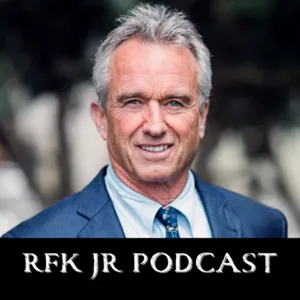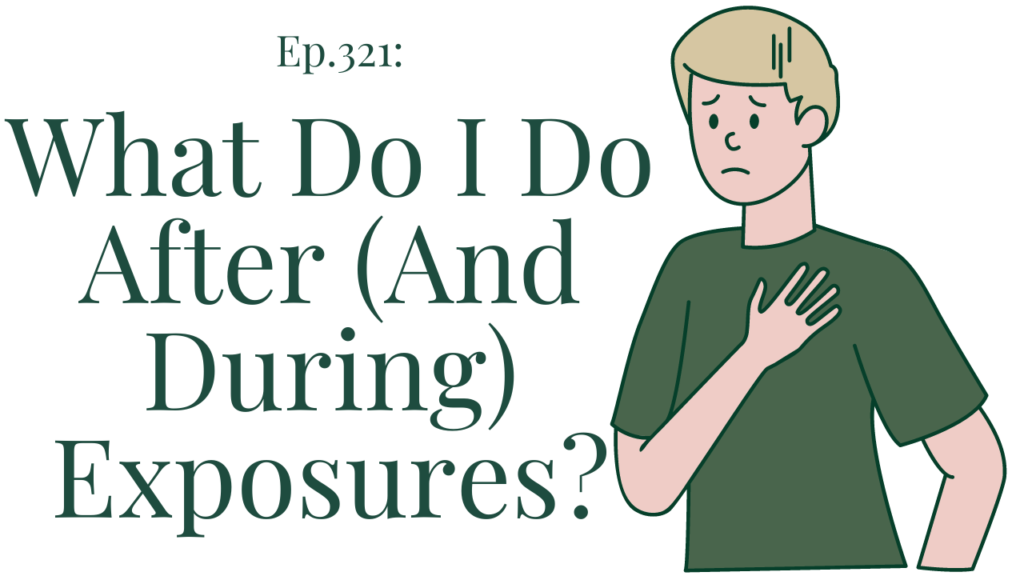Podcast Summary
Understanding mass formation psychology: Governments and totalitarian forces manipulate fear, loneliness, and isolation to control populations, a concept documented for over a century called mass formation psychology.
Mass formation psychology is a concept used to explain how governments and totalitarian forces manipulate fear and other elements like loneliness and isolation to assert control over populations. This process can occur spontaneously or be artificially provoked. Professor Matthias, an expert in clinical psychology and statistics, discussed this phenomenon during our conversation, emphasizing that it's not a new concept, having been documented for over a century. He also clarified that he prefers to use the term "mass formation" rather than "mass formation psychosis" or "hypnosis," as the latter terms might be problematic from an ethical and intellectual standpoint. The professor shared how he became interested in this topic due to his skepticism towards the response to the crisis, which he believed was overblown based on the statistics and data available. Overall, the conversation highlighted the importance of understanding mass formation psychology and its potential impact on population behavior and control.
Overestimation of COVID-19 danger and neglect of collateral damage: Experts and public overlooked potential harm of lockdowns, collateral damage was underrepresented in media, leading to a large-scale psychological phenomenon during COVID-19 crisis
During the COVID-19 crisis, there was a consistent overestimation of the danger posed by the virus and a neglect of the collateral damage caused by the measures taken to contain it. This phenomenon was evident at various levels, from mathematical models to public perception. Experts and the general population tended to overlook the potential harm of lockdowns and other restrictions, despite evidence suggesting that these measures could result in more deaths than the virus itself. Instances of this were raised by scientists and organizations like the UN, yet the message fell on deaf ears. The media also played a role in this, as the collateral damage was seldom represented in numbers and graphs, allowing the numbers of virus victims to dominate the narrative and have a greater emotional and cognitive impact on the population. This psychological process, which involved a large-scale mass formation, proved to be a significant challenge during the crisis.
Social Isolation and Lack of Meaning Lead to Mass Formations: Social isolation and a lack of meaning contribute to mass formations, resulting in anxiety disorders and record-breaking use of antidepressants and anxiolytics.
Mass formations, which have existed throughout human history, have become stronger and more prevalent in the last few centuries due to increasing social isolation and a lack of meaning in people's lives. These conditions lead to high levels of free-floating anxiety in the population. Before the coronavirus crisis, there were warnings about a loneliness epidemic, and the use of technology and industrialization had contributed to these issues. As a result, over 1 in 5 people worldwide suffered from anxiety disorders, and the use of antidepressants and anxiolytics was at an all-time high. The first and most crucial condition for mass formation is social isolation, which can lead to a lack of meaning making and free-floating anxiety. Understanding these conditions can help us address the root causes of mass formations and prevent their negative consequences.
Mass formation in fragmented societies: In fragmented societies, individuals susceptible to anxiety and frustration may form a collective bond through a shared narrative, providing mental control and decreasing anxiety. This process can lead to the rise of totalitarian states.
Under certain societal conditions, such as a lack of social bond and meaning, free-floating anxiety, and frustration, individuals may be susceptible to mass formation. This occurs when a narrative is distributed through mass media, providing an object of anxiety and a strategy to deal with it. This connection allows individuals to experience more mental control and decreases anxiety. Historically, this has been observed in fragmented societies during times of widespread malaise, where a charismatic leader emerges with a mission, a scapegoat, and a call to action, allowing the masses to direct their aggression and frustration towards the scapegoat. This process results in a new kind of solidarity, but it's important to note that this new social bond is not between individuals, but rather between the individual and the collective. Totalitarian states are built on this process of mass formation, and it's the psychological difference between totalitarian states and classical dictatorships.
Mass formation creates a strong bond between individuals and the collective in totalitarian states: People join mass formations in totalitarian states for a sense of belonging and obedience to the collective, prioritizing it over their individual interests.
Mass formation and totalitarian states create a new social bond between individuals and the collective, where obedience and sacrifice for the collective become crucial. This bond is the only one allowed in a totalitarian state. The significance of this is that individuals feel a strong need to belong to a collective, especially when socially isolated. Rituals, such as coronavirus measures, are experienced as important by this part of the population, regardless of their practical meaning or absurdity. The real reason people buy into these narratives is not because they believe them to be accurate, but because they create a sense of connection and belonging. This 30% of the population, once entered into the process of mass formation, becomes difficult to convince otherwise. The term "fascism" in Italian originates from the idea of a bundle of sticks, emphasizing the importance of the bundle over the individual sticks. This metaphor illustrates how individuals in mass formation prioritize the collective over their individual interests.
Understanding the power of mass formation and group hypnosis: Mass formation and group hypnosis are powerful forces that make individuals susceptible to demagoguery and authoritarian leadership. Scholars have described how these phenomena involve a shared narrative, ideology, and sense of identity, which can be manipulated by leaders. It's crucial to maintain a balance between individual and collective interests.
Mass formation and group hypnosis are powerful forces in human behavior, with historical roots dating back to our tribal past. These phenomena make individuals vulnerable to demagoguery and authoritarian leadership. Scholars like Gustav Le Bon, Sigmund Freud, and others have described how group formation involves a shared narrative, ideology, and sense of identity, which can be manipulated by leaders. It's essential to maintain a balance between individual and collective interests, as both are crucial. Leaders of mass movements are often deeply committed to their ideologies and can exploit the population's anxiety to organize, steer, and manipulate them. Le Bon noted that these leaders are also hypnotized by their own beliefs, further fueling the mass formation process. Understanding this dynamic can help us navigate the complexities of group behavior and resist manipulation.
Validating beliefs and using Socratic method to sow doubt: Leaders manipulate masses, but validating their beliefs and questioning through Socratic method can sow doubt and prevent harmful outcomes.
Manipulating and deceiving the masses to achieve an ideal society is a common tactic used by leaders, but directly confronting them to wake them up from this manipulation is not effective. Milton Erickson suggested validating their beliefs and using the Socratic method to sow doubt through questioning instead. However, mass formation makes individuals intolerant for dissonant voices, making it easier for them to continue believing in the narrative and using these voices as scapegoats. Historical evidence shows that silencing opposition in public space can lead to atrocities, contrasting with classical dictatorships. Therefore, validating beliefs and using the Socratic method are potential strategies to deal with mass formation and prevent it from leading to harmful outcomes.
Historically, dictators suppress opposition to commit atrocities: Dictators suppress opposition to commit atrocities, but speaking out and offering alternatives is crucial for preventing mass formation and new normals that lead to repression and fragmentation.
The suppression of opposition and the unleashing of atrocities by authoritarian leaders are historically linked. While a dictator may moderate his aggression after silencing the opposition to show the benefits of his leadership, a totalitarian leader, in a state of mental intoxication, will commit absurd atrocities. It's an illusion to believe that silence is safer, and instead, we must continue to speak out and connect with each other. Furthermore, we should never try to convince people to return to the old normal, which was the reason for mass formation, but instead, offer an alternative new normal where people can live freely. The use of new technologies can contribute to atomization and fragmentation, making it even more important to speak out and offer alternatives.
Technology-driven social disintegration and mass formation: The internet titans profit from societal chaos and mass formation, leading individuals to engage in self-destructive behaviors, forgetting their individual interests.
The current societal chaos and totalitarianism can be linked to the technology-driven social disintegration. The internet titans, who played a significant role in creating the digital infrastructure, have become the principal beneficiaries of this power dynamic. This process of social disintegration and mass formation has historical parallels with theocratic states, where there was a merger of religious and governmental control. However, in the current context, people engage in self-destructive rituals, such as mask wearing and lockdowns, without being aware of their symbolic nature. This hypnotic state makes individuals forget their individual interests and radically alter their behavior.
Totalitarianism self-destructs: Totalitarian regimes ultimately destroy themselves, nonviolent resistance is effective against them, and individuals must continue speaking out and building parallel structures to survive and wait for the system's collapse.
While totalitarian regimes may have more tools of control in the digital age, they are still self-destructive and are unlikely to last indefinitely. Hannah Arendt and Gustav LeBeau argued that totalitarianism ultimately destroys itself. The use of nonviolent resistance is an effective strategy to challenge these regimes, as demonstrated throughout history. Despite the absence of an external enemy, nonviolent resistance remains a powerful tool for resistance. It is crucial for individuals to continue speaking out, demonstrating, and building parallel structures to survive and wait for the system's eventual collapse. This strategy, which is also a medical perspective, is essential for navigating the challenges of totalitarianism in the digital age.








